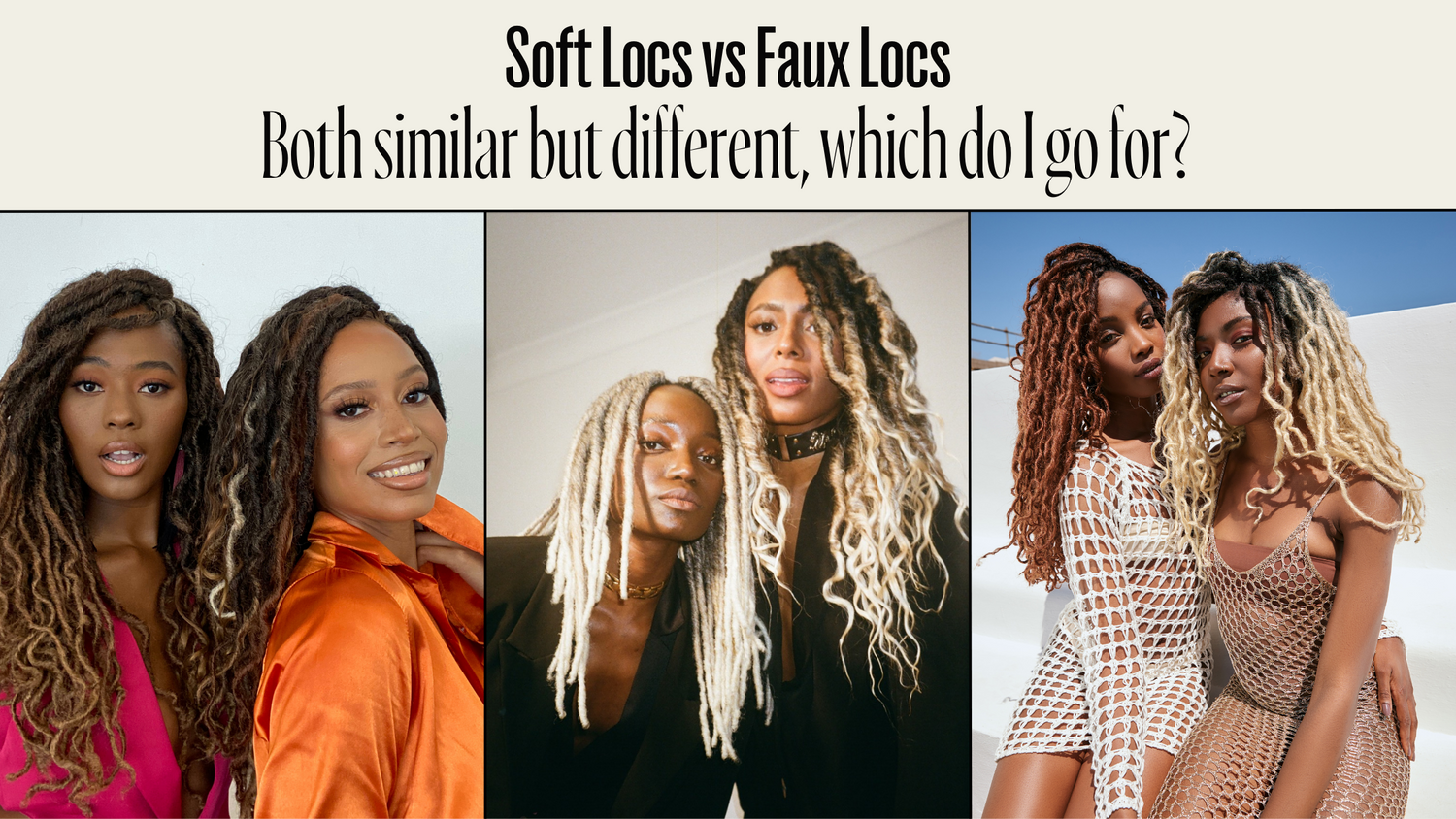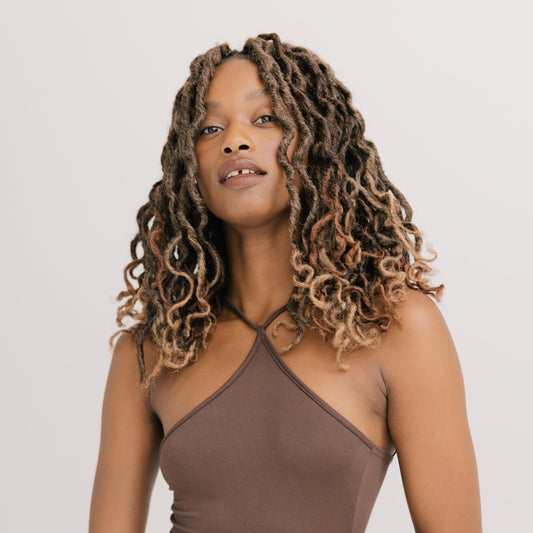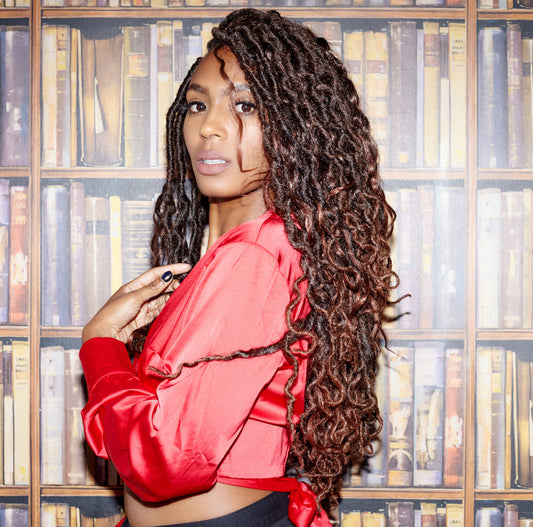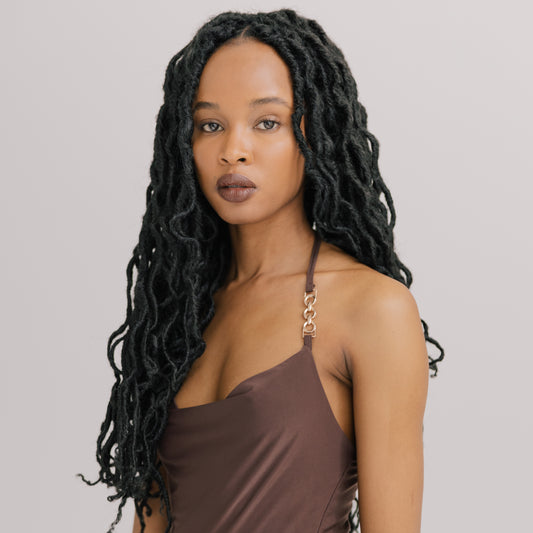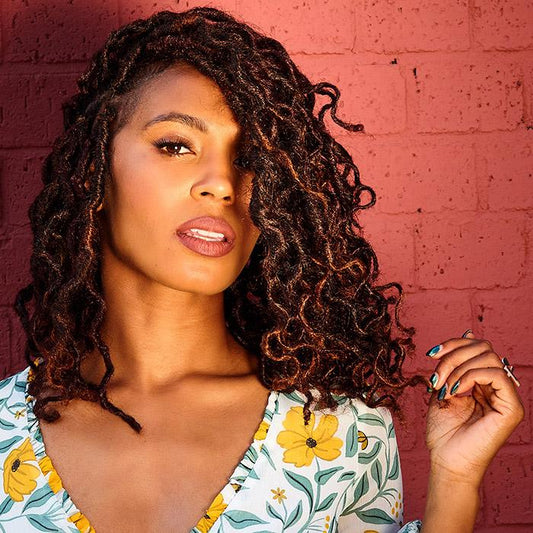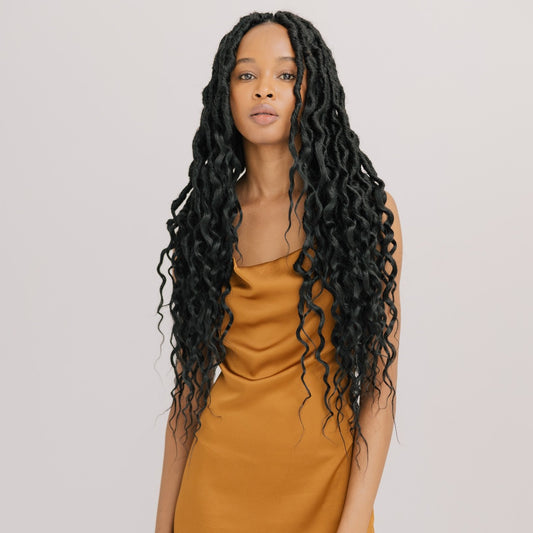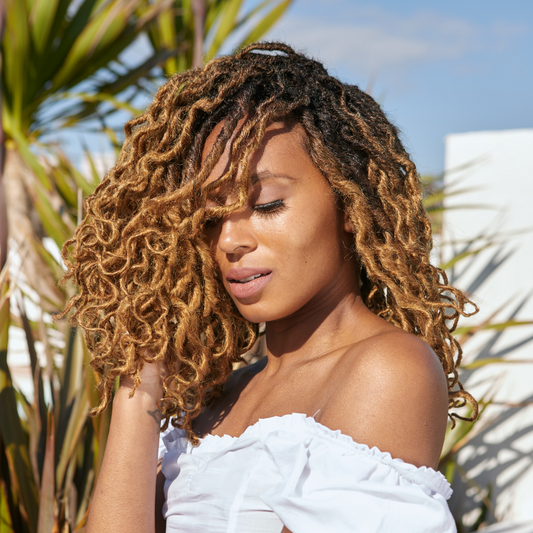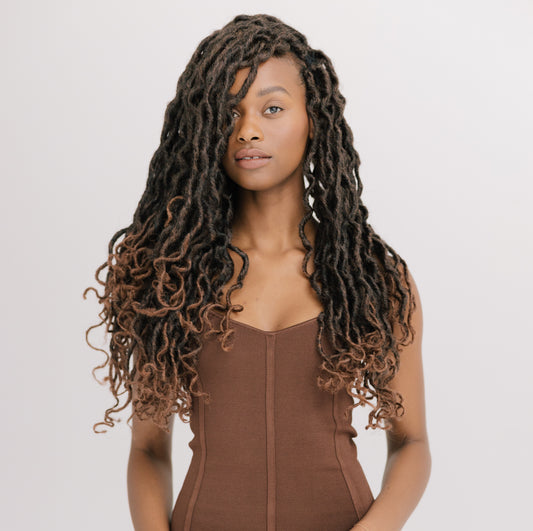Soft locs or faux locs? What are they? What’s the difference? And which do I actually want?
If you are on the hunt for locs that are protective and stylish, then you would have definitely encountered the two most popular styles: faux locs and soft locs. Knowing the difference between these two trendy hair extensions will ensure your next temporary hairstyle aligns with your style, budget, and maintenance needs.
To help you choose the perfect style for you, we have highlighted the main differences between soft locs and faux locs.

What Are Faux Locs?
Faux locs are temporary loc'd hair extensions that are attached to your natural hair, usually with the crochet method. Faux locs is an overarching term that covers all crochet faux locs, including everything from butterfly locs to goddess locs and even includes soft locs.
Faux locs have trended for years as they provide the beautiful and unique aesthetic of natural dreadlocks within a few hours, as opposed to the months it would take to develop your own natural locs. As a protective hairstyle, they keep your natural hair protected from any damage and allow your hair to grow healthily.
What Are Soft Locs?
Soft locs are a distinct style of faux locs. Soft locs gain their name from their softer feel compared to other tighter and firmer faux loc hair extensions. These protective locs have quickly risen in popularity as many believe they provide a more natural look.
Main Differences Between Soft Locs and Faux Locs
Slay in your choice of hairstyle by discovering the differences between soft and faux locs.
Hair Used
The different hair used for faux and soft locs allows you to find a style that matches your creative and confident vibes.
Faux locs can be made from either synthetic or human hair, but typically, faux locs are made from marley hair. Marley hair is the preferred hair to use as its coarser texture achieves the most authentic aesthetic, although it can be more expensive.
Faux locs can also be made from Kanekalon hair. Kanekelon hair is widely available and a budget-friendly synthetic faux loc option, although its sleeker and shiner appearance can make it less authentic to natural dreadlocks.
Soft locs are also available in synthetic, human hair, or human hair blend options. The synthetic hair options include water wave hair, afro kinky hair, or faux crochet locs.

Weight
The truth is, faux locs tend to be heavier than soft locs. This added weight of faux locs can (in theory) lead to tension and potentially damage your hair, but only if installed incorrectly - which with our tutorials, you won’t. Our faux locs will never hold you back from living your best life.
Soft locs are often a popular choice because they are known for being lightweight, resulting in less tension. With their lighter weight, soft locs are known for how they move as freely and confidently as you do.
Method
Soft locs vs faux locs have different methods on how you attach the hair extensions to your natural hair.
With faux locs, there are two methods that are the most commonly used:
- Braid-in Method: The braid-in method for faux locs includes box braiding your hair and wrapping the hair extension around each natural braid. If you are looking to give your locs the authentic effect of real dreadlocks, this method is the way to go.
- Crochet Method: The crochet method for faux locs includes braiding your hair into cornrows and then using a latch hook to crochet the locs onto the cornrows. After the cornrowing, this method is quicker and can last up to 12 weeks.
Although soft locs are a type of faux loc, they require a specific installation method to achieve the bouncy and freer movement they are known for.
To install soft locs, you will first need to plait individual sections of your hair. You will then wrap each plait around the individual hair extension. Typically, soft locs will use passion twist hair or spring twist hair for the wrapping.

Longevity
Choosing between faux and soft locs can depend on how long you are wanting to enjoy and show off your protective styling.
Faux locs can last around 12 weeks. The major bonus to faux locs is that they start to look better as time passes, making these an exceptional long-lasting loc extension choice.
Soft locs can last between 4 to 6 weeks, making them a significantly less long-lasting style than faux locs. On the upside, this means they are not a long-term commitment, making them a great choice for a fabulous upcoming occasion.
Maintenance and Hair Care
The major benefit to faux locs is that they require very little maintenance to keep them looking superb. As they are a temporary hairstyle, you will not need to wash or condition your faux locs.
Soft locs require more maintenance than faux locs. To retain their soft texture, you will need to regularly hydrate your locs with moisturizing conditioning treatments. You should also consider sleeping with a silk cap to keep your locs protected from any friction while you sleep that could cause a frizzy texture.
With both faux locs and soft locs, you need to take steps to care for your natural hair. Follow our top care tips to keep your natural hair healthy, gorgeous, and protected.
- Gently Cleanse: While you do not need to wash your faux or soft locs, you do need to keep your roots and scalp clean. Using a gentle cleanser or a natural option such as apple cider vinegar, you can cleanse your roots and scalp every few weeks.
- Moisturise: Keeping your scalp and hair roots moisturized is essential for unveiling healthy hair after taking out your faux or soft locs. You can use a few drops of oil or a leave-in conditioner to keep your hair moisturized and healthy. Make sure to keep your baby hairs that are not attached to a loc extension moisturized to promote new growth.

Cost
When it comes to choosing between soft locs vs faux locs, the cost can be a huge factor.
The cost of the faux locs will depend predominantly on what hair is used, with human hair being more expensive than synthetic hair and Marley hair is more expensive than Kanekelon hair. The cost will also be impacted by which installation method you choose, the length, how many packs you need, and your specific stylist (unless you DIY like we do!). In general, you can expect faux locs to be your more budget-friendly choice than soft locs.
Soft locs are typically a more expensive hit to the bank account. Their cost will also depend on the length you have chosen, how many packs you need, and your specific stylist.
Make your locs suit your budget by opting to install your locs yourself or getting a capable friend or family member to do it for you.

So, What’s the Answer?
Soft locs are a distinct type of faux loc with a softer feel. While soft locs are lightweight and offer a more natural aesthetic, they are your more expensive option, they do not last as long, and they require more maintenance.
Faux locs is the blanket name for all crochet locs, ranging from butterfly locs to goddess locs to soft locs. Faux locs can be somewhat heavier, but are a go-to style choice as they tend to be more affordable, long-lasting, and require less maintenance.
Discover your favorite faux locs for your next hairstyle with Boho Locs.






